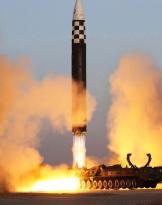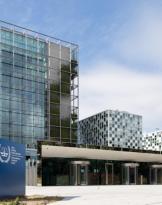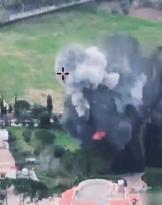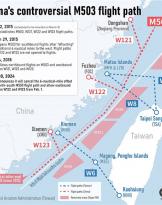As the Russian invasion absorbs Western attention, the Dragon moves its pawns.
In the last few hours, six Y-20 cargo planes1 of the Chinese Air Force (photo) landed at Tesla Airport in Belgrade, to deliver HQ-22 surface-to-air missile systems for the Serbian army, fueling concerns about a Balkan accumulation of weapons that can only shake the fragile regional equilibrium .
There is no doubt that the delivery of weapons on European territory, without counting the NATO states of Turkey and Bulgaria, represents a demonstration of the growing global technical and logistical capabilities of China, capable of organizing its largest strategic transport of war material with well six aircraft of such large size.
Beijing, in the space of just one weekend, therefore gave a concrete and worrying demonstration of military and political strength, confirmed by the obtaining of all the necessary authorizations for the use of the airspace of the various transit countries.
While Serbia, on the one hand, reconfirms President Vucic, on the other, while voting in favor of the UN resolutions condemning the Russian attacks in Ukraine, refuses to join the international sanctions against Moscow.
 Despite being warned by the Americans in 2020 from buying the HQ-22 systems, better known by the export acronym FK-3, the officials in Belgrade, despite having requested to join the EU, have considered it appropriate to overlook on the need to bring their weapons into line with Western standards. The Chinese missile system has been compared to the US surface-to-air system Patriot, and to the Russian S-300, despite having a shorter range. In any case, Belgrade will be the first European user of Chinese missiles, in a context that sees Serbia aimed at enhancing its FAs, which have already taken delivery of Chinese reconnaissance drones since 2020 Wing Loong.
Despite being warned by the Americans in 2020 from buying the HQ-22 systems, better known by the export acronym FK-3, the officials in Belgrade, despite having requested to join the EU, have considered it appropriate to overlook on the need to bring their weapons into line with Western standards. The Chinese missile system has been compared to the US surface-to-air system Patriot, and to the Russian S-300, despite having a shorter range. In any case, Belgrade will be the first European user of Chinese missiles, in a context that sees Serbia aimed at enhancing its FAs, which have already taken delivery of Chinese reconnaissance drones since 2020 Wing Loong.
The most obvious of the Western concerns is that the Sino-Russian war build-up will induce Serbia to wage another war against the former Kosovo province, not recognized by either Beijing or Moscow, including cooperation it has no limits, as stated by Wang Wenbin, spokesman for the Chinese Foreign Ministry.
If China is actively working to increase its naval capabilities, it is no surprise that it is doing the same in the aeronautical field, as evidenced by the sorties on Taiwan that have demonstrated Beijing's ability to operate beyond the first island circle of the South China Sea both in a defensive and offensive sense in contrast to possible American actions, to develop from the Xian Y-20 versions for in-flight refueling and command and control capable of coordinating fighter and attack drone actions.
 In the last ten years, Sino-Balkan relations have materialized in two particular forms of integration, infrastructural cooperation and direct and indirect Chinese investments in the manufacturing sector, all activities that have led to an analysis of the framework according to concrete paradigms which, although presented according to the symbology of New Silk Road they were characterized by a reflection on costs and benefits. Meanwhile, the business scenario will certainly become more crowded, and there will be a need for China to make the BRI more sustainable, both for partners and investors.
In the last ten years, Sino-Balkan relations have materialized in two particular forms of integration, infrastructural cooperation and direct and indirect Chinese investments in the manufacturing sector, all activities that have led to an analysis of the framework according to concrete paradigms which, although presented according to the symbology of New Silk Road they were characterized by a reflection on costs and benefits. Meanwhile, the business scenario will certainly become more crowded, and there will be a need for China to make the BRI more sustainable, both for partners and investors.
While it is true that China is trying to reshape its investment plans, it is equally true that it will be increasingly necessary to focus on quality rather than quantity. This will not lead to a decrease in relations between Beijing and the Balkans, but to a more in-depth and predictive evaluation of the concrete outcomes of the cooperation.
What is certain is that, now, the Chinese presence, highlighting entrepreneurial opportunities in Georgia, Greece, Hungary and Romania, has however exposed the shortcomings of the States, the lack of real political and economic stability, making it much more difficult EU process.
Since the first election of Aleksandar Vučić in 2017, contacts with Beijing have intensified, leading to projects and investments. Despite an economy not at the top, Serbia has conquered the top in cooperation with China between Central and Eastern Europe, so much so that it has entered into agreements on the prevention of the terrorist threat; the Dragon, for its part, aims to obtain economic advantages, but also and above all to build an area of practicable geopolitical influence in all those countries that aspire to join the EU.
 Sino-Serbian cooperation also plays a strong symbolic role, given that Vucic has openly declared that, in relation to Covid, European solidarity was only a facade, unlike that of China, the only one capable of strengthening the sectors in which investments Russians and Westerners fail to develop full potential.
Sino-Serbian cooperation also plays a strong symbolic role, given that Vucic has openly declared that, in relation to Covid, European solidarity was only a facade, unlike that of China, the only one capable of strengthening the sectors in which investments Russians and Westerners fail to develop full potential.
Relations between Beijing and Belgrade have been further strengthened by common anti-Western sentiments, fueled by Kosovo's painful declaration of independence.
If Serbia really succeeds in joining the EU, this is the best time for Beijing to build a strong political and economic position free from stricter controls. It is also for this reason that Serbia, in the Ukrainian affair, follows a double oven policy: it sympathizes with Moscow, which supports it on Kosovo, but must consider its relations with Brussels. The Serbian policy of non-alignment is starting to wear out.
Conclusions. The European instability has reached the Italian borders, conveyed by a political rationale and part in which many had uncritically confided; if the Russian invasion has connotations that make one shiver, the hypothetical confrontation with China takes on even more worrying aspects.
Last entry: Rome, from Belgrade, is 719 km away, Beijing 7.411. Given the flight operations concluded by the Chinese air force, it would be appropriate to start taking more adequate measures.
1 The Y-20 will be equipped with new Chinese-made jet engines that will allow an increase in the maximum take-off weight, so as to allow the transport of the Type 99A tank or two Type 15 light tanks.
Photo: Ministry of National Defense of the People's Republic of China YouTube / Xinhua












